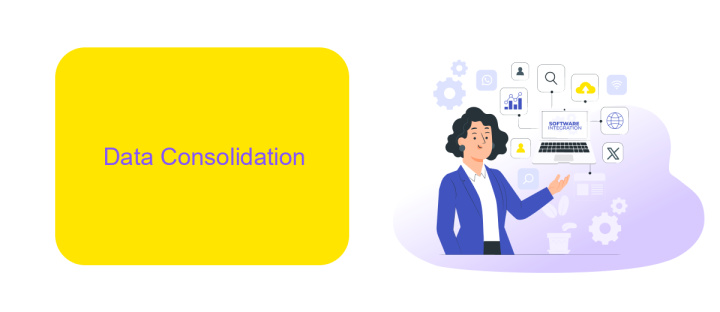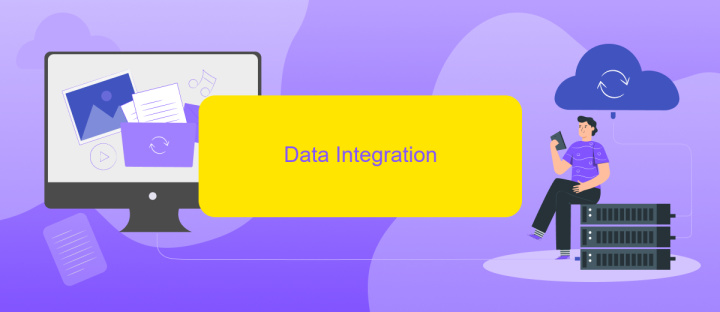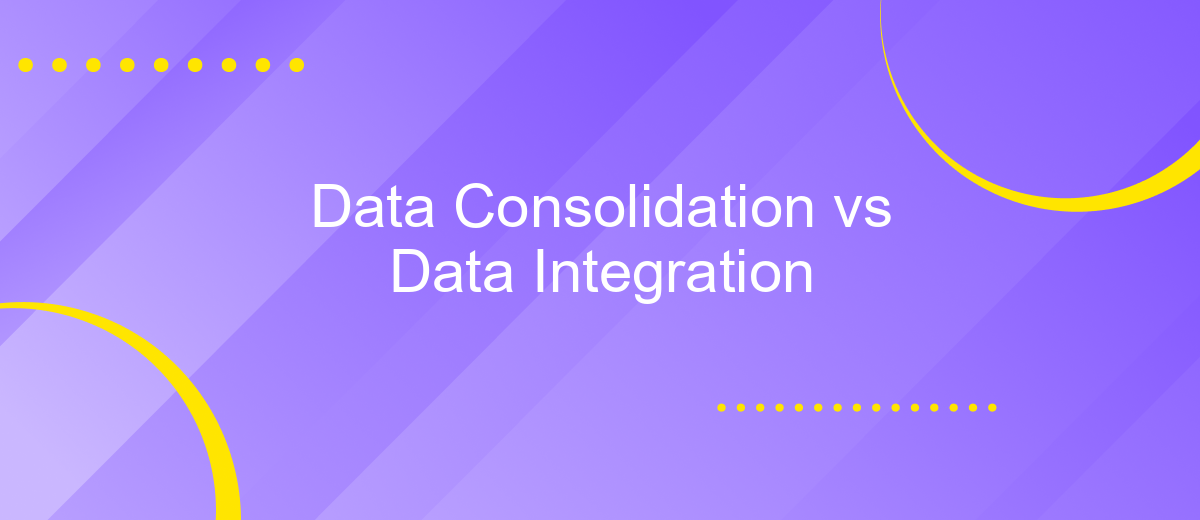Data Consolidation vs Data Integration
In today's data-driven world, businesses are inundated with vast amounts of information from various sources. Efficiently managing this data is crucial for informed decision-making and operational efficiency. Two key approaches to handle this challenge are data consolidation and data integration. This article explores the differences, benefits, and use cases of each method, helping organizations choose the best strategy for their data management needs.
Introduction
In today's data-driven world, businesses are increasingly reliant on the seamless flow and consolidation of data to make informed decisions. Understanding the differences between data consolidation and data integration is crucial for optimizing data management strategies. While both processes aim to unify data, they serve distinct purposes and present unique challenges.
- Data Consolidation: Merging data from multiple sources into a single, unified view.
- Data Integration: Connecting disparate data sources to enable real-time data flow and interaction.
Choosing the right approach depends on your specific business needs and goals. For instance, tools like ApiX-Drive can simplify the integration process by automating data flows between various applications, ensuring that your data is always current and accessible. By understanding these differences, businesses can better leverage their data assets to drive efficiency and innovation.
Data Consolidation

Data consolidation is the process of combining data from multiple sources into a single, unified view. This approach is particularly useful for organizations that need to aggregate data from various departments, systems, or databases to gain comprehensive insights. By consolidating data, businesses can improve data quality, reduce redundancy, and ensure consistency across the organization. This unified view of data enables better decision-making and more efficient reporting, as all relevant information is available in one place.
One of the key benefits of data consolidation is its ability to streamline data management processes. Tools like ApiX-Drive can facilitate this by automating the data consolidation process, allowing for seamless integration of data from different sources. ApiX-Drive supports a wide range of platforms and can be customized to meet the specific needs of an organization, making it easier to maintain a cohesive data ecosystem. Ultimately, data consolidation helps organizations harness the full potential of their data, leading to improved operational efficiency and strategic insights.
Data Integration

Data Integration is the process of combining data from different sources into a single, unified view. This practice is essential for businesses to ensure that all their data is consistent, accurate, and accessible across various departments. Effective data integration can lead to better decision-making, improved operational efficiency, and enhanced customer experiences.
- Identify data sources: Determine where your data is coming from, such as databases, cloud services, or applications.
- Select integration tools: Choose tools that facilitate seamless data integration. ApiX-Drive, for instance, offers a user-friendly platform for connecting various data sources.
- Map data fields: Ensure that data fields from different sources are correctly mapped to maintain consistency.
- Implement data governance: Establish policies and procedures to manage data quality and security.
- Monitor and maintain: Regularly check the integration process to ensure it runs smoothly and address any issues promptly.
By integrating data effectively, organizations can leverage comprehensive insights and create a more cohesive data environment. Tools like ApiX-Drive simplify the process by providing automated workflows and real-time synchronization, allowing businesses to focus on strategic initiatives rather than technical challenges.
Comparison of Data Consolidation and Data Integration

Data consolidation and data integration are both essential strategies for managing data within an organization, but they serve different purposes. Data consolidation involves combining data from multiple sources into a single, unified storage system. This process is typically employed to reduce redundancy and improve data quality, making it easier to analyze and report on data.
On the other hand, data integration focuses on ensuring that data from different sources can be used together seamlessly. This often involves real-time data exchange between systems, enabling more dynamic and responsive business processes. Data integration can be more complex to implement, as it requires setting up connections and maintaining data consistency across various platforms.
- Purpose: Data consolidation aims to centralize data, while data integration aims to connect disparate data sources.
- Complexity: Data consolidation is generally simpler, whereas data integration can be more complex due to real-time requirements.
- Tools: Tools like ApiX-Drive can facilitate data integration by automating the connection between different systems.
- Outcome: Consolidation results in a single data repository, while integration enables synchronized data across multiple systems.
While both data consolidation and data integration are crucial, the choice between them depends on organizational needs. Data consolidation is ideal for creating a unified data warehouse, whereas data integration is better suited for real-time data accessibility and interoperability. Understanding these differences can help organizations choose the right approach for their data strategy.
Conclusion
In conclusion, both data consolidation and data integration play crucial roles in modern data management strategies. While data consolidation focuses on merging data from multiple sources into a single, centralized repository, data integration emphasizes the seamless connection and communication between disparate systems. Each approach has its unique advantages and is suitable for different business needs and scenarios.
Choosing between data consolidation and data integration depends on the specific requirements of your organization. For companies that need real-time data access and synchronization across various platforms, data integration solutions like ApiX-Drive offer efficient and automated ways to connect different applications and services. On the other hand, data consolidation is ideal for organizations looking to create a comprehensive data warehouse for in-depth analysis and reporting. Ultimately, understanding the distinctions and applications of these two methods will enable businesses to make informed decisions and optimize their data management processes.
FAQ
What is the difference between data consolidation and data integration?
Why is data consolidation important for businesses?
Can data integration be automated?
What are some common challenges in data consolidation?
How does data integration support real-time decision-making?
Strive to take your business to the next level, achieve your goals faster and more efficiently? Apix-Drive is your reliable assistant for these tasks. An online service and application connector will help you automate key business processes and get rid of the routine. You and your employees will free up time for important core tasks. Try Apix-Drive features for free to see the effectiveness of the online connector for yourself.

